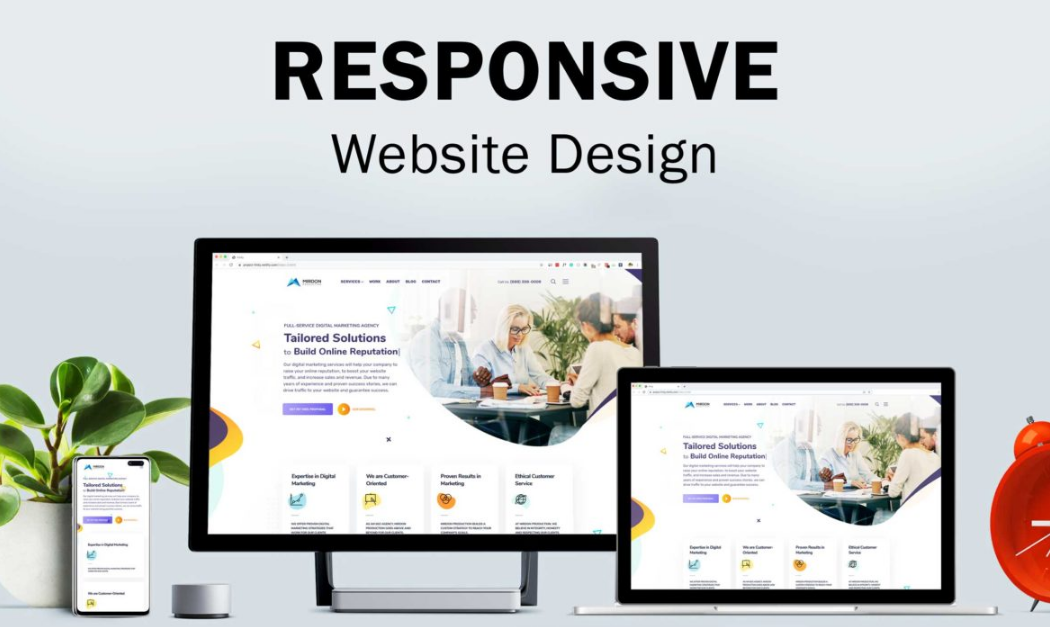The internet has become a place where people come to find information, look at images, read articles, watch videos, and even buy products. This means that users can access content from desktop computers as well as mobile devices such as tablets and smartphones.
Whether someone is on the go or in another room, they can still access what they need. Users no longer have to consider which operating system they’re on before visiting a website; They just have to open their browser and type in the url to get there.
This creates some challenges for designers who now have to make sure their sites look great on large monitors and small mobile screens. This article will provide an overview of responsive web design so you have a better understanding of why it’s important and how it can help your business succeed online. Keep reading to learn more.
What is Responsive Web Design?
A responsive web design is a type of website design that can change and reformat the way it looks based on the screen size of the device it’s being viewed on. This means that a responsive website will look good and be easy to navigate no matter if a user is on a laptop, desktop, tablet, or smartphone.
This is great for businesses because a responsive design will allow them to reach more customers. People are not only going to be visiting the web on desktop computers anymore; many are also using mobile devices like tablets and smartphones.
If a business’s website only works well on desktop computers, then a large number of customers will be unable to visit it.
Why Is Responsive Web Design Important?
A lot of people visit websites every day and a large percentage of them are doing so from mobile devices. So, if you have a website that isn’t optimized for these devices, then you’re missing out on a lot of potential customers who could be visiting your site.
There are several reasons why you should consider investing in a responsive website design. These include the fact that it can help with SEO. Google prioritizes websites that are designed to be mobile-friendly over those that aren’t. This can result in higher rankings on SERPs and an increased amount of traffic to your website.
Benefits of Responsive Web Design
There are many benefits associated with responsive web design. Some of these include increased website traffic, increased conversion rates, and better brand recognition. Let’s dive into those benefits so that you can see how responsive web design can help your business succeed online.
Increased Website Traffic – A responsive website can help you get a lot more traffic from mobile devices. This is simply because people are using mobile devices more often. If you have a website that isn’t optimized for mobile devices, you are missing out on a ton of potential traffic.
Increased Conversion Rates – A responsive website can also help you increase your conversion rates. This is because it makes it easier for customers to navigate and fill out your forms. It also makes it easier for them to complete purchases. If your website is difficult to navigate and customers can’t fill out forms easily, they are less likely to buy from you.
Better Brand Recognition – A responsive website can also help you build your brand recognition. This is because it makes it easier for visitors to remember your website. If your site is hard to navigate or your URL is long and cumbersome, it can be difficult for people to remember it.
A responsive design can make it easier for customers to remember your site because it will be easy for them to navigate and find what they’re looking for.
How to Implement Responsive Web Design
If you’re not sure how to implement a responsive design, don’t worry. There are many different tools that can help you do this. There are different frameworks and tools that can help you create a responsive design. Some of the most popular ones include Bootstrap, Foundation, and Squarespace.
If you’re trying to choose which one to use, it’s a good idea to read reviews and compare features before making a decision. Another important thing to do when implementing a responsive design is to test it.
You want to make sure that your website looks good on all types of devices, including laptops, desktops, tablets, and smartphones. You can do this by using different devices and testing your website on each one.
It’s a good idea to use real devices instead of emulators like Android Studio or iOS Simulator. This will give you a more accurate representation of how your website will look on real devices.
Final Words
If you have a website or are thinking about creating one, you should consider a responsive web design. This design is great for reaching a wider variety of customers and can help you improve your SEO.
It’s important to remember that you don’t have to create a brand-new website for this type of design. You can upgrade your existing site instead to make it more mobile-friendly.
With these tips, you should now have a better understanding of what responsive web design is and why it’s important.
